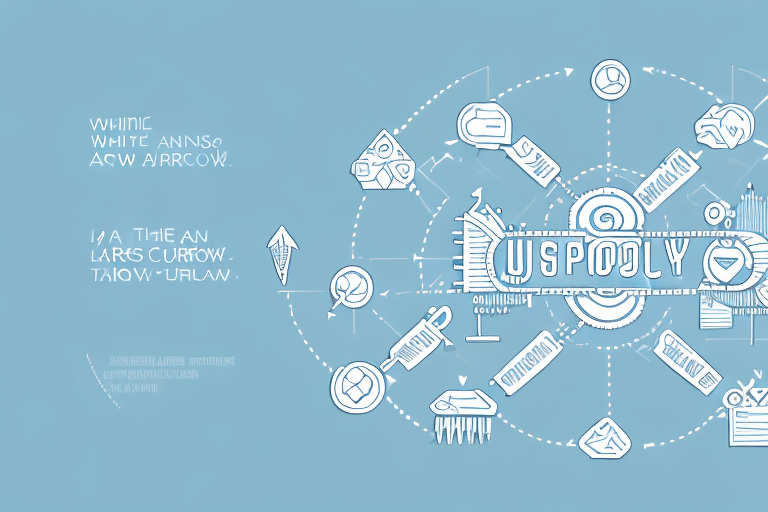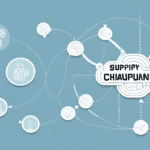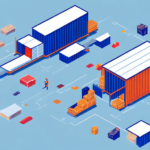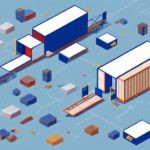Optimizing Supply Chains for Forward and Reverse Flows
In today's fast-paced and ever-changing business landscape, the ability to manage both forward and reverse flows in the supply chain is essential. Forward flows refer to the traditional process of moving products from manufacturers to consumers, while reverse flows encompass product returns, recycling, and other reverse logistics activities.
Understanding Forward and Reverse Flows in Supply Chain Management
In a traditional supply chain, the focus is primarily on managing forward flows – getting the product to the customer. However, reverse flows are becoming increasingly important due to the rise of e-commerce and the growing demand for sustainable and responsible business practices. Reverse logistics activities can include product returns, refurbishment and repair, and recycling or responsible disposal. Effectively managing these processes is now more critical than ever to reduce costs, meet customer expectations, and achieve sustainability targets.
Effective management of reverse flows requires a comprehensive understanding of the entire supply chain, including suppliers, manufacturers, distributors, and customers. Companies need to develop strategies and processes to handle returns and refurbishment efficiently while minimizing waste and reducing environmental impact. This can involve implementing technology solutions, such as automated returns processing and tracking, as well as partnering with third-party logistics providers who specialize in reverse logistics. By prioritizing reverse flows and incorporating sustainable practices into their supply chain management, companies can improve customer satisfaction, reduce costs, and enhance their reputation as socially responsible businesses.
Key Benefits of Optimizing Both Forward and Reverse Flows
- Cost Reduction: Minimizing waste and maximizing the value of returned products can lead to significant cost savings.
- Improved Customer Satisfaction: A seamless and responsive returns process enhances customer loyalty and satisfaction.
- Sustainability: Reducing waste and improving the circularity of the supply chain helps businesses meet their sustainability targets.
- Inventory Management: Better understanding of product flows allows for more accurate demand forecasting and inventory adjustments, reducing the risk of stockouts and overstocking.
- Product Innovation: Analyzing return reasons and customer feedback can identify areas for product improvement, leading to increased competitiveness.
Common Challenges in Designing an Optimized Supply Chain
Designing a supply chain that effectively manages both forward and reverse flows presents several challenges:
- Integration: Seamlessly integrating reverse logistics with forward logistics requires managing multiple stakeholders and ensuring effective communication channels.
- Information Management: Reverse logistics involves tracking and managing product returns, which demands robust information systems for real-time updates and status tracking.
- Environmental Impact: Ensuring environmentally responsible disposal and recycling requires careful planning and coordination with third-party providers.
Identifying Areas for Improvement in Supply Chain Flows
To enhance both forward and reverse flows, businesses should analyze their current supply chain processes to identify areas for cost reduction, efficiency improvement, and enhanced customer experience. This can involve:
- Reviewing return policies
- Analyzing waste generation and recycling rates
- Ensuring effective integration of reverse logistics with forward logistics
Conducting a comprehensive supply chain audit can help pinpoint specific areas needing improvement.
Implementing Best Practices for Supply Chain Optimization
Adopting best practices is crucial for optimizing both forward and reverse flows:
- Robust Reverse Logistics Process: Develop efficient processes for handling returns and refurbishments.
- Clear Return Policies: Establish return policies that meet customer expectations while safeguarding business interests.
- Optimized Transportation Routes: Reduce waste and emissions by optimizing logistics and transportation routes.
- Investment in Technology: Utilize technology solutions for efficient management of supply chain flows.
Sustainability: Measuring and reducing carbon emissions, minimizing waste, and using sustainable materials and packaging not only reduce environmental impact but also enhance brand reputation and customer loyalty.
Collaboration: Work closely with suppliers and partners by sharing data and insights to identify and implement supply chain improvements collaboratively.
Technology Solutions for Streamlining Supply Chain Flows
Modern technology offers various solutions to streamline both forward and reverse supply chain processes:
- Warehouse Management Systems (WMS): Enhance inventory tracking and management.
- Transportation Management Systems (TMS): Optimize transportation routes and reduce costs.
- Reverse Logistics Software: Manage returns, refurbishments, and recycling efficiently.
One prominent technology is RFID (Radio Frequency Identification), which allows for real-time tracking and monitoring of inventory movements. This can help reduce inventory errors, improve order accuracy, and enhance overall supply chain efficiency.
Measuring Supply Chain Optimization Success Through KPIs
Key Performance Indicators (KPIs) are essential for tracking the success of optimized supply chains. Important KPIs include:
- Return rates
- Recycling rates
- Transportation costs
- Customer satisfaction levels
Regularly measuring and analyzing these KPIs helps businesses identify areas for improvement and make necessary adjustments to their supply chain processes.
Case Studies: Successful Supply Chain Optimization
Several companies have effectively optimized their supply chains for both forward and reverse flows:
- Dell: Implemented a closed-loop recycling process, enabling the recovery and reuse of up to 90% of materials in its products.
- Amazon: Invested in innovative solutions such as robotics for sorting returned products and initiatives to prevent waste through product donations and resales.
Future Trends in Supply Chain Flow Optimization
The future of supply chain optimization will be driven by advancements in technology and a continued emphasis on sustainability:
- Artificial Intelligence and Machine Learning: These technologies will provide deeper insights into supply chain processes, identify new optimization opportunities, and enhance the customer experience.
- Increased Sustainability: The shift towards sustainable and responsible business practices will further drive the optimization of reverse logistics and the circularity of supply chains.
The Role of Sustainability in Supply Chain Optimization
Sustainability is a critical factor in optimizing supply chains that manage both forward and reverse flows. By creating a more circular supply chain that maximizes the value of returned products and reduces waste, businesses can:
- Reduce their environmental impact
- Achieve long-term sustainability goals
- Enhance collaboration with suppliers and customers who prioritize sustainability
Collaborative Approaches to Supply Chain Optimization
Optimizing both forward and reverse flows requires collaboration with suppliers, customers, and other stakeholders. Effective collaboration strategies include:
- Sharing data and insights
- Developing joint sustainability goals
- Creating supply chain transparency
By working collaboratively, businesses can enhance supply chain efficiency and achieve greater overall benefits.
Analyzing the Financial Impact of Optimized Supply Chains
Optimizing forward and reverse flows can have a significant positive impact on a company’s bottom line. While initial investments may be required, the long-term benefits include:
- Reduced operational costs
- Improved customer satisfaction
- Increased sustainability
- Enhanced business reputation
Conducting a cost-benefit analysis can help businesses understand the financial implications and justify the investments in supply chain optimization.
Mitigating Risks in Supply Chain Flow Management
Managing both forward and reverse flows introduces certain risks, such as disruptions and delays. To mitigate these risks, businesses should:
- Develop a robust risk management process
- Establish clear communication channels
- Invest in contingency planning
Collaboration with suppliers and customers can also help in identifying and managing potential risks more effectively.
Implementing Effective Change Management for Supply Chain Optimization
Optimizing supply chains often involves significant changes to existing processes. An effective change management strategy should include:
- Clear communication channels
- Stakeholder engagement
- Ongoing training and development
- Cultivating a culture of continuous improvement
By actively seeking and acting on feedback, businesses can drive ongoing optimization and ensure successful implementation of supply chain changes.




















